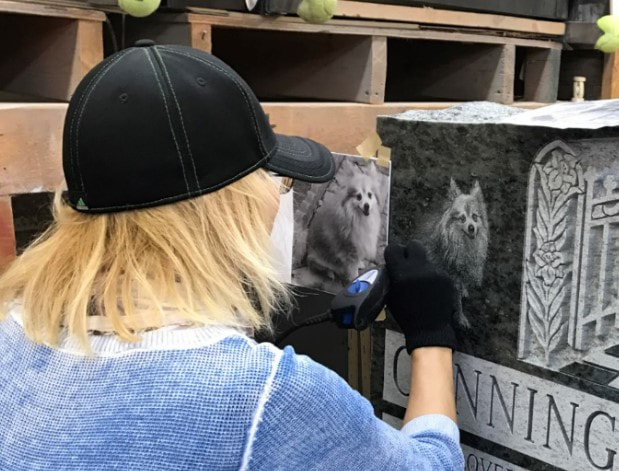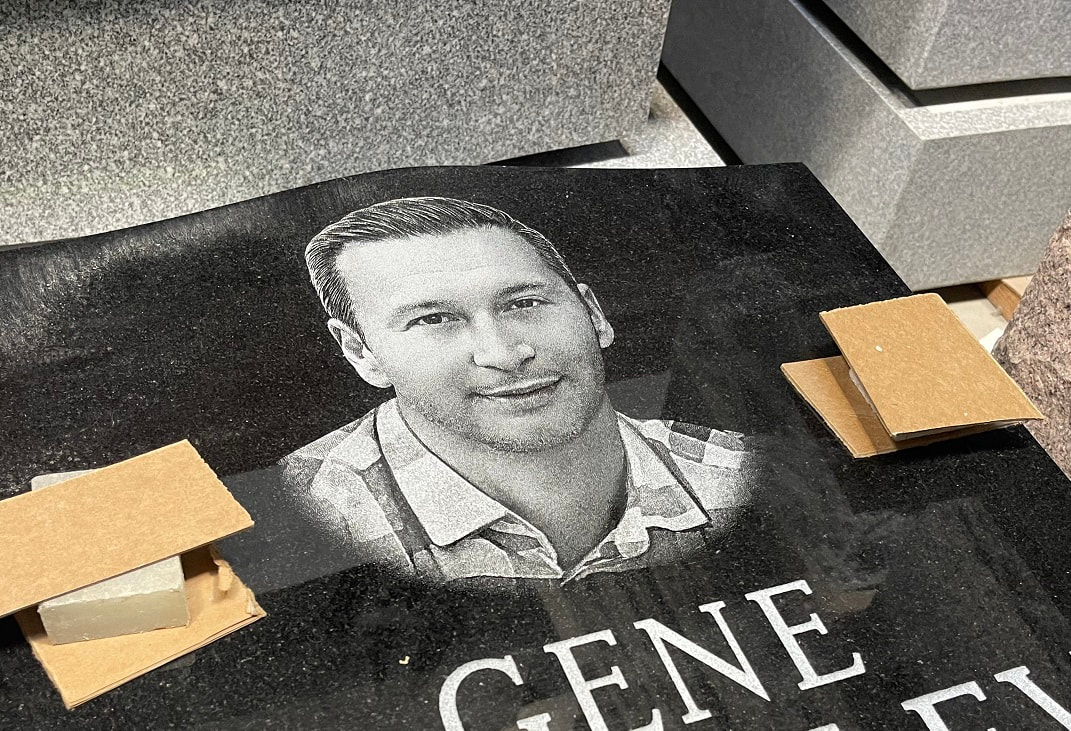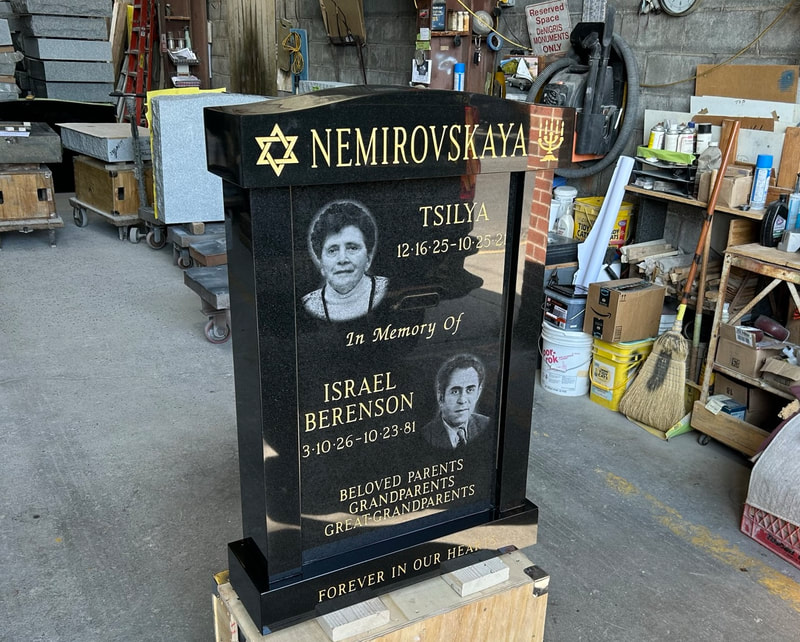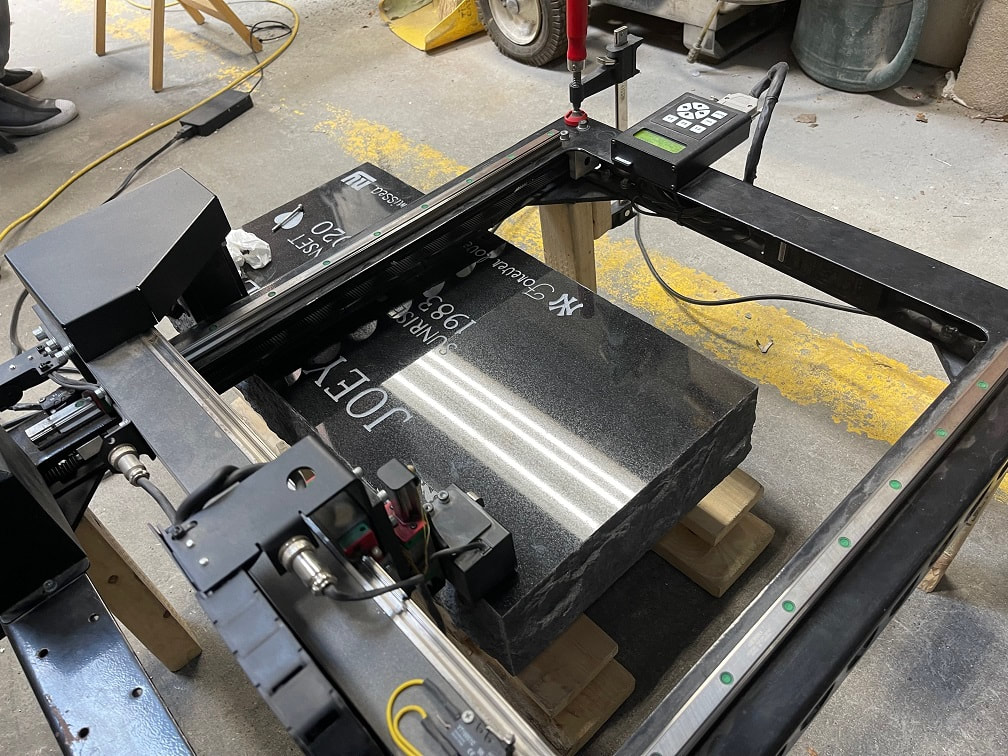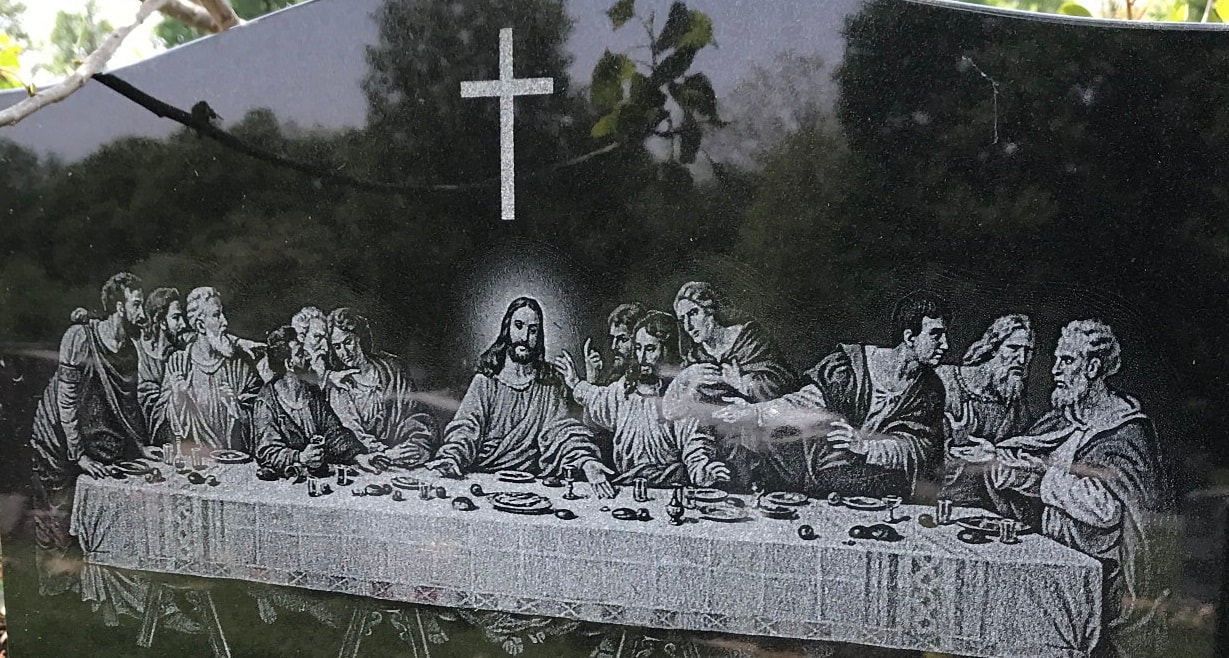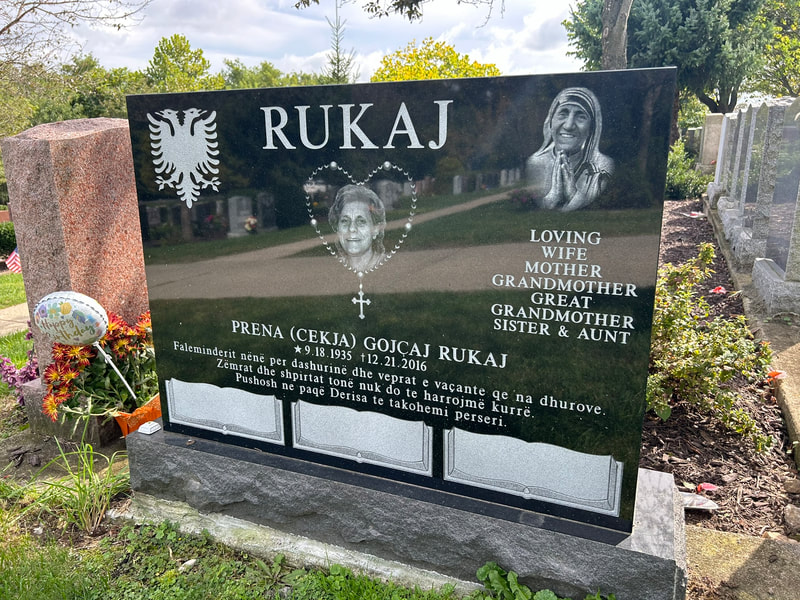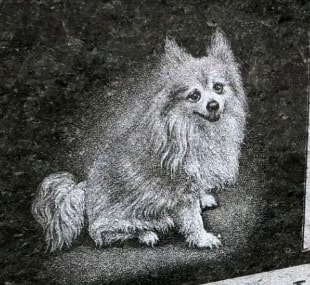Techniques used by granite artisans vary, depending on the method required to achieve a desired aesthetic.
Oftentimes, customers ask us to describe the difference between a sandblast-carved design, vs. a diamond-etched design.
Oftentimes, customers ask us to describe the difference between a sandblast-carved design, vs. a diamond-etched design.
WHAT IS A SANDBLAST DESIGN?
|
A sandblast design is carved into the stone using a stencil and a sandblast machine, controlled by a shaping artist, in a specialized booth. For standard designs (stock images of Saints, Crosses, Floral design, etc.), many of these images are kept in a library, and we transpose them from our computer application into a die-cut machine that creates the stencil. For custom artwork, our artist uses a photograph or other image that the customer provides to us, and he then proceeds to copy it by hand on paper. This paper is then scanned into our system and transposed into the die-cut machine. The stencil is then created, and adhered onto the stone. The stone, with stencil intact, is then brought into the sandblast booth, where the sandblast technician applies just the right amount of pressure to create the image into the stone. Afterwards, the stencil is removed, and a stone artisan uses hand tools to fine-tune the sandblasted image. Sandblast carvings are beautifully crafted, but are unable to show shading and various contrast shades, this making them appear less “life-like.”
|
Below examples show the level of detail in sandblasted images:
WHAT IS AN ETCHING?
|
Etching a monument is either done by freehand or by a machine, directly onto the stone, with a diamond-tipped tool (similar to a Dremel). Our etching artists permanently engrave your image directly into the polished surface of the granite. Etchings are a form of carving, and will last forever on the monument. The level of detail is incredible once complete, as etching allows the ability for the artist to use shading/shadows, high resolution contrast, fine-detail lines and other techniques while drawn, which are not available through a standard sandblast carving method. This is why etching is commonly used for facial portraits and detailed landscape themes.
The caveat is that only darker colored granites can be etched, resulting in the high contrast between the dark granite and the almost white etching. |
Below examples show the level of detail and high resolution, only found in etched images:
ANIMAL EXAMPLE: |
SAINT FIGURE EXAMPLE: |













